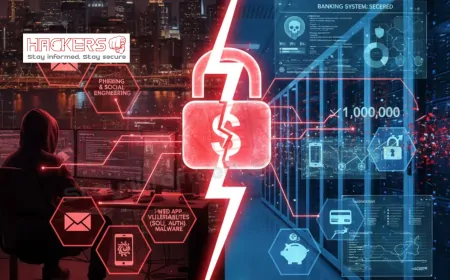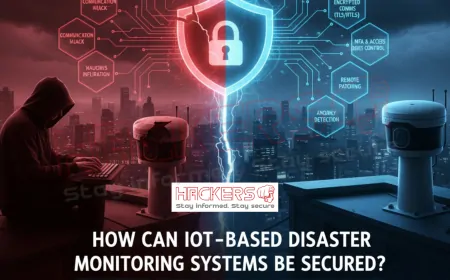What Are the Biggest Cyber Risks to India's Energy Independence?
India dreams of energy independence by 2047. Solar panels blanket rooftops. Wind farms spin off the coast. Oil rigs drill deeper in the Krishna-Godavari basin. Pipelines carry gas from Turkmenistan. Electric vehicles hum on highways. But in the shadows, a silent threat grows. A hacker in a far-off country clicks a button. A refinery shuts down. A pipeline valve freezes. A power grid blacks out. In 2022, Oil India’s IT systems were locked by ransomware. In 2023, a phishing attack hit a major solar plant’s control system. In 2024, a state-sponsored group probed ONGC’s offshore platform networks. These are not random glitches. They are cyber risks to India’s energy future. As India cuts oil imports from 85 percent to 67 percent by 2030, its energy systems go digital. Smart grids, IoT sensors, and cloud SCADA bring efficiency. They also bring danger. One breach can halt fuel, spike prices, or delay green goals. In this blog post, we will uncover the biggest cyber risks to India’s energy independence. We will explain them in simple terms, show real cases, and reveal how India is fighting back. Because energy freedom is not just about drilling more oil. It is about keeping the lights on, no matter who is trying to turn them off.

Table of Contents
- India’s Push for Energy Independence
- How Cyber Threats Undermine Energy Goals
- Risk 1: Cyberattacks on Oil and Gas Imports
- Risk 2: Vulnerabilities in Renewable Energy Systems
- Risk 3: Smart Grid and Power Distribution Attacks
- Risk 4: OT Systems in Refineries and Pipelines
- Risk 5: Supply Chain and Vendor Breaches
- Risk 6: IoT in Energy Infrastructure
- Risk 7: State-Sponsored Cyber Espionage
- Risk 8: Insider Threats and Human Error
- Real Cyber Incidents in Indian Energy
- How India Is Responding to These Risks
- Lessons from Global Energy Cyberattacks
- Cyber Risk Matrix for India’s Energy Sector
- Conclusion
India’s Push for Energy Independence
India’s energy vision is bold:
- Cut oil imports to 67 percent by 2030
- 500 GW renewable capacity by 2030
- Net-zero emissions by 2070
- Expand domestic oil and gas production
- Build 15,000 km of new pipelines
ONGC, OIL, and Reliance drill offshore. Adani and Tata build solar parks. NTPC runs smart grids. India now ranks 3rd in renewable growth globally. But digitalization is key. Smart meters, SCADA, and cloud analytics run it all. This progress creates new risks.
How Cyber Threats Undermine Energy Goals
Cyberattacks can:
- Delay renewable projects with stolen designs
- Shut down domestic rigs with ransomware
- Disrupt import terminals, forcing emergency buys
- Cause blackouts, eroding public trust
- Raise costs: Rs. 1 lakh crore lost to cybercrime in 2023
Energy is now Critical Information Infrastructure (CII). A breach is a national security issue.
Risk 1: Cyberattacks on Oil and Gas Imports
India still imports 85 percent of its oil. Key chokepoints:
- Import terminals: Vadinar, Paradip
- Tanker tracking systems
- Payment platforms for crude
A hacked terminal can:
- Delay 10 million barrels daily
- Spike global crude prices
- Force rationing at pumps
In 2024, a phishing attack hit a major import terminal’s billing system. Contained, but a warning.
Risk 2: Vulnerabilities in Renewable Energy Systems
Solar and wind are digital:
- Inverters connect to cloud
- SCADA controls wind turbine pitch
- IoT monitors panel output
Risks:
- Ransomware locks solar farm output
- Hackers tilt turbines to fail
- Stolen panel efficiency data sold to rivals
In 2023, a Rajasthan solar plant’s SCADA was probed by Chinese IPs. No breach, but close.
Risk 3: Smart Grid and Power Distribution Attacks
India’s smart grid has 250 million smart meters by 2025. Risks:
- DDoS on grid control centers
- False load data causes blackouts
- Hacked substations trip breakers
A 2022 pilot in Gujarat faced a simulated attack. It could have blacked out 5 million homes.
Risk 4: OT Systems in Refineries and Pipelines
OT (Operational Technology) runs physical processes:
- PLC controls refinery valves
- SCADA monitors pipeline flow
A breach can:
- Cause explosions (TRITON 2017)
- Stop 1 million barrels daily
- Pollute rivers with oil spills
Oil India’s 2022 ransomware hit OT-linked systems. Recovery took weeks.
Risk 5: Supply Chain and Vendor Breaches
Energy relies on global vendors:
- Siemens for turbines
- Honeywell for refinery DCS
- Chinese inverters in solar
One hacked vendor = total access. The 2020 SolarWinds attack showed how. In India, a 2024 vendor breach exposed pipeline maps.
Risk 6: IoT in Energy Infrastructure
IoT is everywhere:
- Pipeline pressure sensors
- Wind farm drones
- Smart meters in homes
Many use default passwords. A hacked sensor can:
- Report false leaks
- Join botnets for DDoS
- Reveal grid weak points
In 2024, 10,000 IoT devices in Assam oil fields were found vulnerable.
Risk 7: State-Sponsored Cyber Espionage
China, Pakistan, and others target India:
- Steal KG basin drilling tech
- Map pipeline routes for sabotage
- Probe nuclear plant controls
APT41 (China) hit Indian energy firms in 2023. Goal: slow India’s rise.
Risk 8: Insider Threats and Human Error
Not all risks are external:
- Disgruntled employee sells access
- Contractor uses weak password
- Engineer clicks phishing email
In 2023, a former ONGC contractor tried to sell platform credentials on the dark web.
Real Cyber Incidents in Indian Energy
These cases show the threat is real:
- Oil India (2022): Ransomware locked G&R systems. $7.5 million demand.
- Solar Plant (2023): Chinese probe on SCADA. Contained.
- IOCL Terminal (2024): Phishing hit import billing. No fuel delay.
- NTPC Grid (2022): Simulated attack in drill. 2-hour blackout possible.
How India Is Responding to These Risks
India is building cyber resilience:
- NCIIPC: OT security mandates for CII
- CERT-In: Weekly energy cyber alerts
- ONGC: OT SOC in Mumbai
- Reliance: AI for pipeline monitoring
- MeitY: Rs. 1,000 crore for energy cyber
All PSUs now run quarterly OT drills.
Lessons from Global Energy Cyberattacks
India learns from others:
- Colonial Pipeline (2021): Paid ransom. India focuses on backups.
- Ukraine Grid (2015): Blackout via malware. India segments OT.
- Saudi Aramco (2012): Shamoon wiped data. India mandates air-gaps.
Cyber Risk Matrix for India’s Energy Sector
| Risk | Target | Impact | Mitigation |
|---|---|---|---|
| Import Disruption | Terminals, tankers | Fuel shortage | Redundant systems |
| Renewable Hack | Solar SCADA | Green goal delay | OT segmentation |
| Grid Attack | Smart meters | Blackout | AI monitoring |
| OT Breach | Refinery PLC | Explosion | Air-gapping |
Conclusion
India’s energy independence is a national priority. But cyber risks threaten every step. From import terminals to solar farms, smart grids to offshore rigs, digital systems are the backbone and the weak point. Ransomware, state espionage, IoT flaws, and insider errors can delay green goals, spike prices, or cause disasters. Real cases like Oil India 2022 and global lessons from Colonial Pipeline show the stakes. But India is fighting back. NCIIPC, CERT-In, and PSU SOCs lead with OT security, AI, and drills. Segmentation, backups, and training build resilience. The future is bright: 500 GW renewables, domestic oil, and secure grids. But only if cyber defense keeps pace. Energy independence is not just about producing more. It is about protecting what we build. India must win this digital battle to power its dreams.
What is India’s energy independence goal?
Cut oil imports to 67 percent and reach 500 GW renewables by 2030.
Can cyberattack stop oil imports?
Yes. By hacking terminals or payment systems.
Are solar plants hackable?
Yes. Cloud-connected inverters and SCADA are entry points.
What is OT in energy?
Systems controlling refineries, pipelines, and grids.
Can hackers cause blackouts?
Yes. By tripping smart grid breakers or falsifying load data.
Was Oil India hacked?
Yes. Ransomware in 2022 locked systems for weeks.
Who targets Indian energy?
State actors from China, Pakistan, and criminal gangs.
Can IoT sensors be used to spy?
Yes. To map pipelines or reveal grid weak points.
Do vendors pose cyber risks?
Yes. One hacked supplier can infect entire refineries.
Can insiders harm energy systems?
Yes. By selling access or clicking phishing links.
Who protects Indian energy from cyber threats?
NCIIPC, CERT-In, and PSU cyber teams.
What is NCIIPC?
National Critical Information Infrastructure Protection Centre.
Can AI stop energy cyberattacks?
It detects threats fast, but needs human oversight.
Are smart meters safe?
Not fully. Weak encryption can allow grid manipulation.
Has India had a major energy cyberattack?
Not yet. But Oil India and solar probes were close calls.
Can cyberattacks delay net-zero?
Yes. By stealing tech or disrupting renewable output.
Do PSUs have cyber insurance?
Yes. Most cover ransomware and recovery costs.
Can pipelines be hacked remotely?
Yes. Via SCADA or vendor remote access.
Will India’s energy be cyber-secure by 2030?
Improving fast, but legacy systems remain a challenge.
What is the biggest risk to energy independence?
State-sponsored attacks on OT and supply chains.
What's Your Reaction?






















































